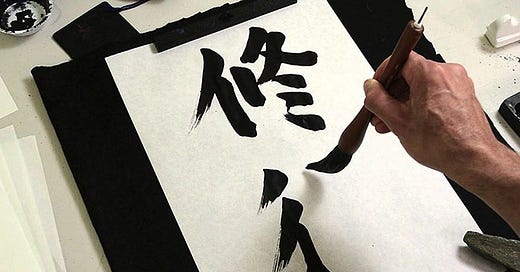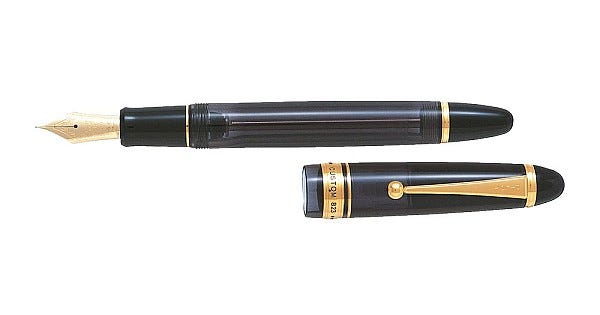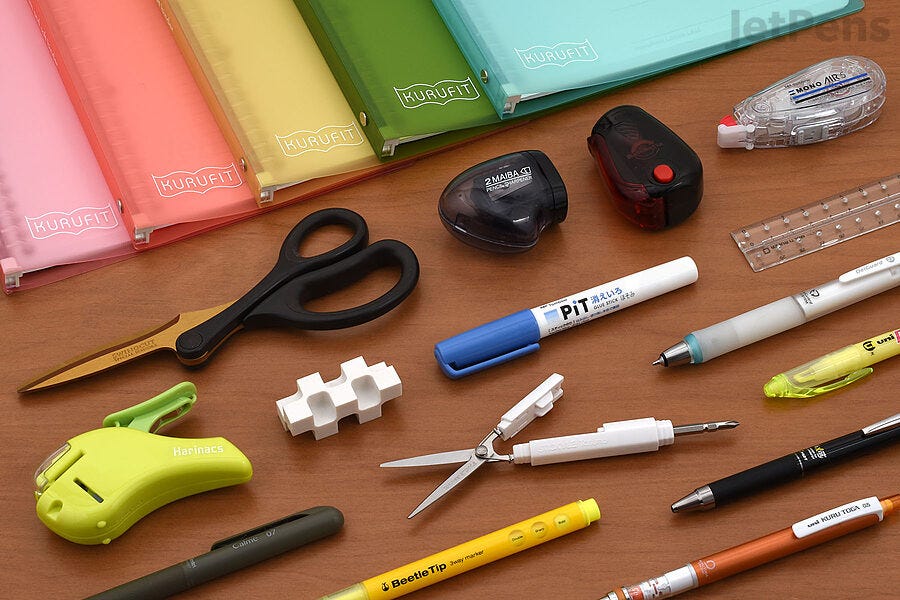Why Are We So Obsessed With Japanese Stationery?
Inside the Quiet Beauty and Global Appeal of Japan’s Most Beloved Exports
From elegantly designed notebooks to precisely crafted fountain pens, Japanese stationery has captured the global imagination. But what's behind this fascination? Why are we collectively obsessed with Japanese stationery? In this article, we’re diving into the world of Japanese stationery to figure out why it’s so irresistible.
The Cultural Backbone: Why Japan Just Gets It
Okay, so here’s the thing: stationery in Japan isn’t just something you throw in your cart at the checkout aisle. It’s like a whole cultural moment. For starters, Japan’s obsession with writing pretty much started centuries ago with shodo (書道), or calligraphy. Back in the day (we’re talking the Asuka period, so waaaay back), Chinese characters were brought over to Japan and became a big deal. Buddhist monks were out here translating texts, and in the process, they turned calligraphy into both an art and a meditative practice. This reverence for writing is evident in the precision and elegance of Japanese pens and brushes.
Fast-forward to the Heian period, and calligraphy was basically the TikTok of its time. Everyone in the upper class was obsessed. Initially, kanji was used exclusively by the elite classes in Japan. The use of written characters was closely associated with power and education. By the 8th century, the Japanese had developed their own syllabaries, hiragana and katakana, to complement the existing kanji system. The creation of hiragana and katakana marked a significant democratization of writing. This is also when women started writing literary masterpieces like The Tale of Genji using hiragana, which is still iconic, btw. Writing became a mix of art, mindfulness, and showing off your skills. Writing was aesthetic. It was self-expression. It was power.
As Japan modernized, these values didn’t fade, they evolved. In the Edo period, calligraphy schools were everywhere. Today, kids in Japan still learn handwriting as a form of discipline and beauty. They're taught to write neatly, organize their notes, and treat their tools with care. Quality stationery is embedded in the educational system and in everyday life. I mean, can you imagine writing kanji with a janky pen? No way. The principles of calligraphy (precision, beauty, and mindfulness) are deeply embedded in Japanese stationery design.
Japanese stationery embodies several key cultural values. The concept of "Monozukuri," which translates to the spirit of making things with dedication and skill, is a cornerstone of Japanese manufacturing. This philosophy ensures that each product, no matter how small, is made with utmost care and attention to detail. This dedication to quality is a reflection of the broader Japanese ethos of excellence and perfection in craftsmanship. In contemporary Japan, the fusion of tradition with modernity is evident in the stationery industry. While honoring traditional techniques and designs, Japanese stationery companies continually innovate, introducing new materials, designs, and functionalities that cater to modern needs.
Why It Feels Different (a.k.a. The Part That Turns You Into a Stationery Snob)
Once you go Japanese stationery, there’s no going back. Everything else feels… lazy by comparison.
Quality and Craftsmanship:
The appeal of Japanese stationery lies in its exceptional quality, meticulous craftsmanship, aesthetic design, and innovative features. This reputation stems from the meticulous attention to detail in the manufacturing process. Japanese companies prioritize precision and durability, ensuring that each product meets rigorous standards. For instance, the ink in Japanese pens flow smoothly and consistently, reducing smudging and enhancing the writing experience. This commitment to quality extends to paper products as well. Japanese notebooks and journals often feature acid-free paper that is resistant to bleed-through, allowing people to write or draw on both sides of a page without worrying about ink seepage. Brands like Midori and Hobonichi make sure their products can handle everything from fountain pens to watercolor brushes.
Aesthetic Design:
Aesthetic design is another cornerstone of Japanese stationery.
Japanese design leans heavily on wabi-sabi (beauty in imperfection), shibui (understated elegance), and sometimes straight-up kawaii (cuteness overload). Whether you're into sleek Muji minimalism or the adorable chaos of San-X character pens, there's something for every taste.
You’ll find cherry blossom patterns, gold-foiled grids, notebooks shaped like toast, and washi tape so cute you won’t want to use it. And yet, it never feels gimmicky. Somehow, they nail that balance between novelty and function.
Innovation:
Innovation is a key factor in the allure of Japanese stationery. Japanese manufacturers are known for their creativity and willingness to experiment with new materials and technologies. This has led to the development of unique products that enhance the user experience. For example, the Pilot FriXion series of pens uses thermo-sensitive ink that can be erased with friction, allowing for error-free writing. Another innovation is the Hobonichi Techo planner, which features Tomoe River paper, known for its thin yet durable quality, making the planner compact yet capable of handling various inks without bleed-through. These innovations not only make Japanese stationery products more functional but also add an element of fun and creativity to their use.
The variety and specialization within Japanese stationery cater to a wide array of preferences and purposes. Whether one is looking for fine writing instruments, artistic tools, or organizational supplies, there is a Japanese product designed to meet those specific needs. For example, artists can find high-quality brush pens that mimic traditional calligraphy brushes, while office workers might prefer sleek, minimalist gel pens for everyday writing tasks. This broad range ensures that there is something for everyone, further broadening the appeal of Japanese stationery.
Cultural Connection:
The deep cultural connection and appreciation for stationery in Japan also plays a significant role in its global appeal. In Japan, the act of writing and the tools used for it are treated with great respect. This cultural reverence is reflected in the design and quality of Japanese stationery, making each product feel special and valued. Users around the world are drawn to this cultural depth and the sense of mindfulness and care that Japanese stationery embodies.
Honestly, Japanese stationery manufacturers have produced some of the most practical, clever, and beautiful stationery products that the world has ever seen.
Stationery Stores as Destinations:
Are THESE absolutely the best Stationery Stores in New York City? | Ep. 2 | NYC Vlog and Walkthrough (A youtube video I made a while back about stationery destinations in NYC)
Japanese stationery has achieved immense popularity on a global scale, with dedicated stores and sections in major retailers worldwide. Brands such as Muji, Pilot, Midori, and Hobonichi have established a strong international presence, making high-quality Japanese stationery accessible to a global audience. These products are highly sought after not only for their functionality and design but also for their cultural appeal, which adds a unique and exotic touch to everyday items.
Japanese stationery stores themselves contribute significantly to this obsession. In major cities around the world, specialty stores dedicated to Japanese stationery, like Kinokuniya and JetPens, attract a loyal customer base who eagerly seek out the latest products and limited editions. Shops like Itoya in Ginza, Loft, and Tokyu Hands aren't just retailers, they're pilgrimage sites for stationery enthusiasts. These stores meticulously curate their selections, emphasizing local brands and exclusive products, creating immersive shopping experiences that turn a simple visit into an event.
Imagine browsing multiple floors of stationery, each carefully categorized and aesthetically displayed, turning shopping into an enjoyable and inspiring exploration. This elevates the mere act of purchasing stationery into an emotional experience that enthusiasts eagerly share.
Community and Identity:
Part of Japanese stationery's allure lies in the global community that it fosters. Enthusiasts gather online to share their collections, setups, and journaling spreads. People gather on platforms like Instagram, Pinterest, YouTube, and Reddit to share their collections, review products, and offer tips on usage and customization. Hashtags such as #JapaneseStationery, #Hobonichi, and #BulletJournal feature thousands of posts showcasing beautifully arranged planners, intricate doodles, and organized desk setups. Influencers and content creators in the stationery niche have dedicated channels and profiles where they provide in-depth reviews, tutorials, and inspiration, helping to spread the love for Japanese stationery further.
The stationery you choose often becomes a personal statement. Using a unique, well-crafted item from Japan signals to others an appreciation for quality, detail, and aesthetics. This expressive identity further strengthens bonds within the stationery community, creating a cycle of appreciation and enthusiasm.
Conclusion: It’s More Than Just Tools
The enduring fascination with Japanese stationery is rooted in more than just its practicality. It's about the experience and joy it brings to everyday tasks. Whether it's the smooth glide of a gel pen, the precision of a mechanical pencil, or the customizable nature of a planner, these products elevate ordinary activities into something special. It speaks to deeper human desires: a longing for connection, mindfulness, beauty, and intentional living.
Personally, I've found that using these high-quality tools has enhanced my productivity and made planning and writing much more enjoyable. Each product feels like a small work of art, designed to bring a little bit of beauty and mindfulness into our lives. That's why we remain captivated, drawn again and again into this delightful, meticulously crafted world.










I’m headed to Japan this fall and stationary is one of the things I’m most excited to explore. Thanks for writing!
Agree with all of this. It’s the follow through and the aesthetics blended with craftsmanship and deep respect for the process.